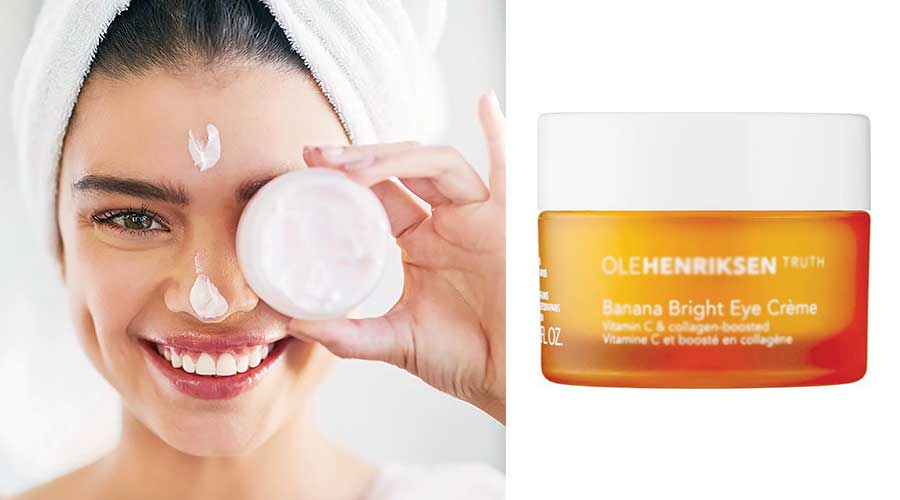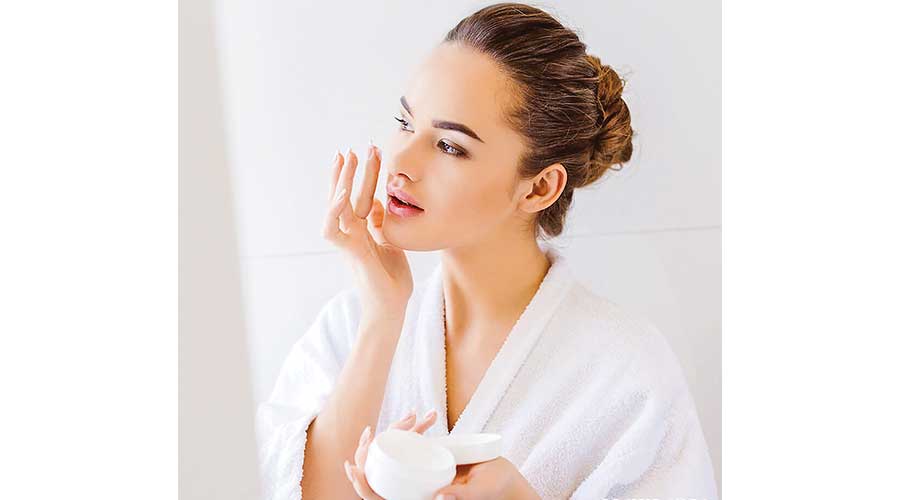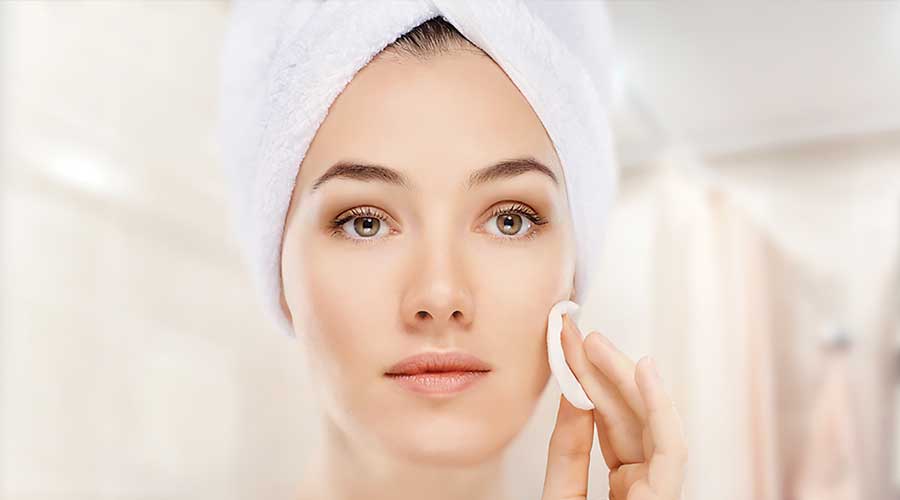Naturally Clear: Herbal Remedies For Acne
- 13 Apr - 19 Apr, 2024
Here's a scary thought: That expensive serum you splurge on every few months might not be working as well as it should simply because you're not layering it over other skincare products in the proper order. Seriously, the order that you apply skincare makes a real and significant difference to your skin. If you're not following that order, it could be compromising the overall efficacy of your routine. And why buy the most effective products if you're not going to use them in the most effective manner? It doesn't make any sense.
Seeing as we rotate between a couple different high-priced serums, this thought is enough to keep us up at night. The order you place your skincare products matters, period. In general, you want to apply products thinnest to thickest. This ensures that all the product is getting time in direct contact with your skin (which is kind of the point of skincare products, yes?).
Because we are paranoid that we’re wasting potent ingredients and subsequently a good amount of our paychecks due to incorrect application order, we surfed the internet to find the best order to applying our skincare routine. Here’s what we found out:

Here’s how you should set your morning skincare routine order:
First things first. Cleansing always takes precedence. It sounds obvious, but some people insist on going without cleanser each morning. Their reasoning is that they wash their face each night. There's no makeup or dirt coming in contact with their skin while they sleep, so they just splash water on their face. This could be a mistake. Why not just splash water on your face in the am? Because even the best products won't work if debris or oil is on the skin. You will gain quite a lot from cleansing, as opposed to just splashing water on your face in the morning, because the products you use work their best and absorb most efficiently on debris-free skin. This makes sense, considering your skin can still produce oil and come in contact with environmental pollution at night.
After cleansing, your skin should be smooth, fresh, and clean. That's when you reach for toner, which is a thin veil of hydration that should always precede moisturiser. Toners are wonderful products to use, and while not everyone needs to use them, everyone can use them: They're calming and provide an additional layer of hydration to prep the skin for makeup. People who have acne and/or oily skin will benefit most from using toner since they're formulated to remove sebum, oil, and dirt from the pores. Tip: Keep a toner in your gym bag, carry one, and keep one at the office for an instant hydrating complexion boost that saves you from taking five minutes to freshen up your skin.
If you don't have oily or acneic skin, treat toner as you would a face mist or facial wipe. They can be especially convenient for use while travelling or refreshing skin on a hot day without ruining your makeup. For the latter, we like using CLE's Lifting Mist, which is compact enough to carry in your bag and has every quality you could want in a toner.
Next is serum. Experts prefer using a vitamin C serum each morning since it provides skin-protecting and anti-aging antioxidants. Vitamin C smoothes the skin's texture and treats and prevents signs of aging.
While some experts also recommend using a water-based serum like Amarte's Aqua Veil Pure Hydration Serum. Your serum should be full of botanical extracts and antioxidants and lightweight yet powerful hydration properties as a primary benefit. The potent blend of good-for-skin ingredients is subsequently why serums are usually the most expensive part of a skincare routine – and also why we are committed to using it correctly, which means applying it before moisturiser and after toner.
After serum, apply moisturiser to keep your skin balanced, hydrated, and plump. For people with dry skin, reach for a thick moisturising cream – we like Tatcha's Dewy Skin Cream. For those with oily skin, try a lighter gel moisturiser like Neutrogena's HydroBoost Water Gel. The latter is one of our favourite drugstore moisturisers at the moment. Experts recommend using your moisturiser as another opportunity to treat your skin. You want your lotion or moisturising cream to have some brightening or retinol properties (yes, it's okay for daytime too!) and then follow that with a light formulation of SPF coverage.
The final moisturising/treatment step of your skincare routine should be eye cream, which should hydrate the delicate under-eye area while keeping fine lines and wrinkles at bay. It should always be the last step in your regular routine. We recommend using it twice a day. Ole Henriksen's Banana Bright Eye Cream is our current favourite morning eye cream. It promises to support your skin's natural collagen production while brightening the look of dark circles thanks to its potent vitamin C.
The final step to a well-ordered skincare routine is sunscreen (of course). It's the best tool for preventing signs of aging – namely hyperpigmentation, fine lines, and wrinkles. Sunscreen should go after skincare and before makeup. It would not be ideal to put SPF under a lotion or cream moisturiser because, by nature, SPF products block sun's rays (and anything else) from absorbing into the skin. Just don't forgo the use of sunscreen for an SPF BB or CC cream. The recommended amount of SPF for daily wear is 50, and most BB creams provide much less coverage than that.

Skincare during the day and night can look vastly different, so here’s as to what your perfect nighttime skincare routine should look like:
Perfection starts from cleansing. We believe that we should always cleanse not only our face but the entire body before going to bed. Taking a shower at night has so many benefits. Our bed should never be in contact with our clothes that we wore outside, or our skin covered with everything from being outside (i.e. dust, bacteria and free radicals). Before you sleep, take a cool shower that will lower your body temperature and it can make it easier to doze off into a sound slumber.
In terms of the face, we believe in a milky cleanser for all skin types. It doesn't strip our skin, and it removes impurities without messing up hydrolipidic layer. Oily skin will actually get the message that there is enough lipids and it will not produce more. As when we strip our skin from it, it sends the wrong message, and skin tries to make up for what is gone and the overproduction starts causing the oiliness.
It is a must to keep your skin balanced. There's a science to it. Your skin’s normal pH level is between 4.6 and 6.4, making it slightly acidic. A toner purifies, detoxifies and balances the skin’s Ph, bringing your skin to where it's the strongest and feels the most comfortable.

Next up is exfoliant. This sloughs off dead skin and pore-clogging impurities, so other skincare products can sink in and work their magic. Both cleansing and exfoliating are essential for keeping skin youthful and fresh, but in many cases, you can combine cleansing/exfoliating into one step. Save time by using a daily exfoliating cleanser like Amarte Daily ExfoliPowder, which uses ultra-fine corn starch for just a touch of gentle manual exfoliation while also cleansing and removing makeup.
Now our skin should be ready to receive a treatment! At night, we sub the morning's vitamin C serum out for a retinol serum like Resurface Retinol Reform.
But a serum isn't the only treatment you should use to aid your skin. On the nights where we have more time we definitely add a sheet mask. For the sheet-mask averse, multi-masking is an option: You can also choose from various types that target a particular skin concern. Skin concerns such as aging, fine lines, excess oil, dehydration, hyperpigmentation and redness. You can even use masks to target your under-eye area, eyelid and lips.
You might keep the same moisturiser for the morning and the night, but you can also use this opportunity to target two separate conditions. Only you know which moisturiser you need – anti-aging, brightening, extra hydrating. And only you know whether you want to use a cream, gel, or somewhere in between. You should also use an eye cream at the end of this step.
The key to the best night time skincare routine? Sleep. But there are certainly some ways you can make even sleeping more effective. Don’t forget to sleep on a satin pillowcase! It is hypoallergenic, cool and super comfortable. Also, it will not absorb the products that you just applied on your face.
COMMENTS